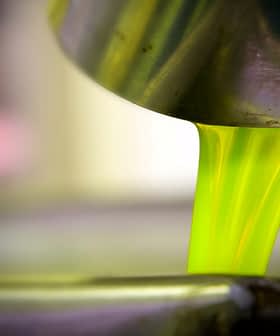Although U.S. consumers pay for olive oil that is fresh, aromatic, and full of health benefits, a report by the University of California Davis Olive Center found that almost 70 percent of the olive oil sold at some California supermarkets was substandard. That lack of quality motivated a group pf Davis students to invent a device that detects rancidity, a common defect in old, oxidized olive oil.
Rancidity changes those sought-after fresh, fruity and grassy flavors of extra virgin olive oil to something more like “crayons or Play-Doh,” said Dan Flynn, the executive director of the UC Davis Olive Center.
Olive oil can become rancid with oxidation resulting in the loss of nutrients, including the valuable antioxidants responsible for numerous health benefits associated with consumption of EVOO.
Most people don’t know how to detect rancid olive oil just by tasting it. In fact another Davis study showed that when people blind-taste an old, rancid olive oil and a fresh, healthful one, they preferred the rancid, thanks to years of being familiar with the taste and an aversion to the bitterness in high-quality EVOOs.
The new method developed by the Davis students is simple, targeted, and can screen for the chemical makeup brought on by rancidity, said Flynn.
See Also:How to Recognize Rancidity
In developing their invention, called OilView, the students first identified aldehydes as the group of chemicals that change when olive oil becomes rancid. They then engineered proteins and developed an electrochemical system that would detect enzyme activity. The final product is an enzyme-based biosensor that detects for specific aldehydes found in rancid olive oil. Mathematical and software suites further help identify the degree of rancidity.
The students believe that use of their inexpensive device at different stages of olive oil production by olive oil producers, and of random bottles by retailers will ensure that customers are getting high quality extra virgin olive oil. The device is expected to cost $60 to $80, and will likely be available in the market in 1 to 2 years.
Last month, Baidu, a leading Chinese Internet search engine and web services company, turned heads when it unveiled its latest innovation at the Baidu World Technology Conference — chopsticks designed to detect contaminated olive oils or oils of substandard quality.








